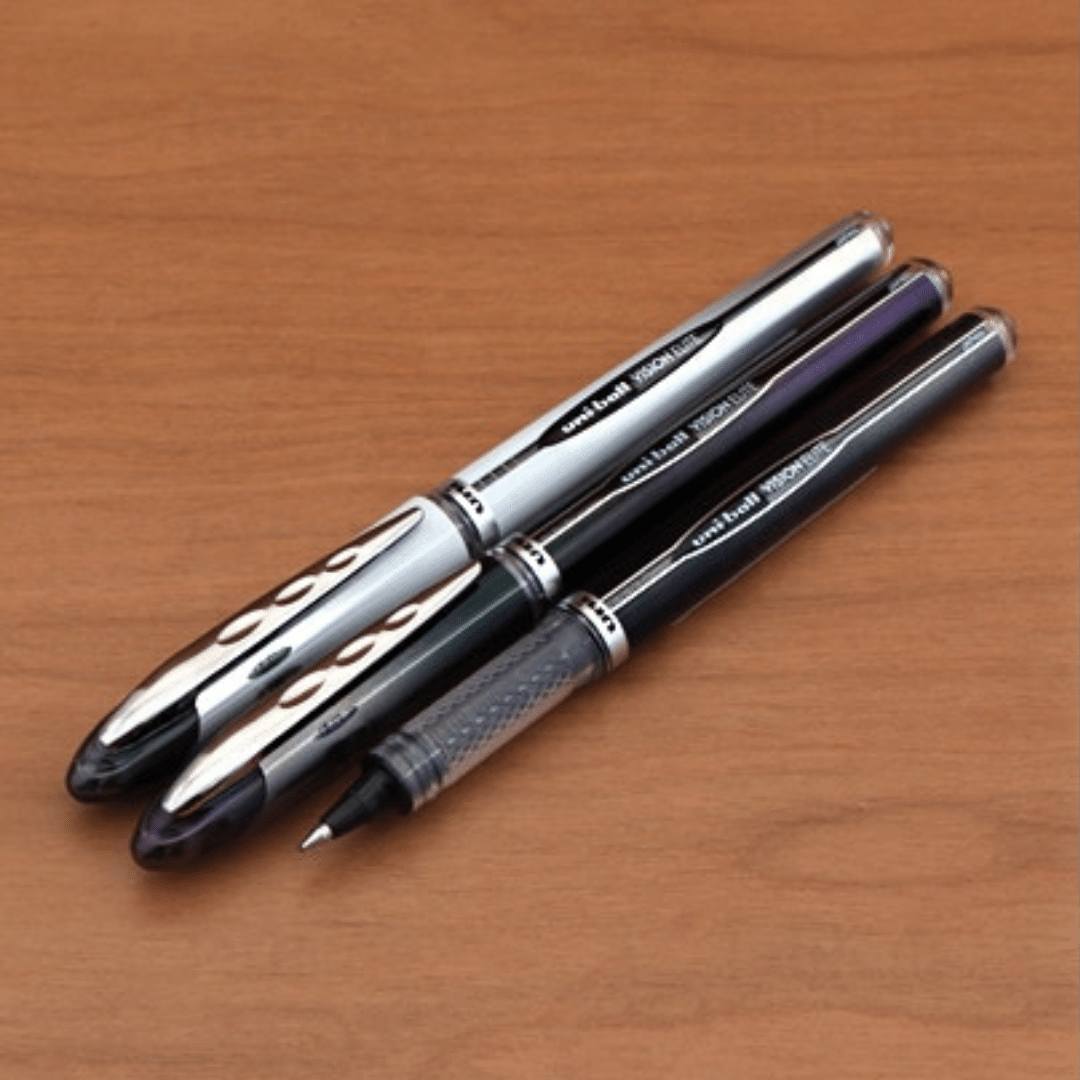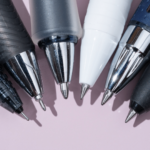
Why Rollerball Pens are Better Than Fountain Pens
High-quality writing instruments are trendy in the office. There is a proper writing instrument for every need. Ballpoint pen, rollerball pen, or fountain pen – which of these products is best for what you want to do? Let’s find out which pen is better, Rollerball pens vs Fountain pens.
Anyone looking for a loyal companion for everyday work and a new pen is often spoiled for choice! While the ballpoint pen is a basic piece of business equipment, and we don’t have to say much about it, it is worth comparing rollerball pens and fountain pens. Both have their characteristics and advantages.
The questions we want to answer in this blog post are:
- What are the benefits of rollerball pens?
- What should you pay attention to when buying rollerball pens?
- And in which aspects does the rollerball perform better than a fountain pen?
What exactly is a rollerball pen?
A rollerball pen could be described as a cross between a ballpoint pen and a fountain pen. It combines the advantages of both types of pens to a certain extent. Like a ballpoint pen, it releases water-based ink when writing using a ball as a writing tip, resulting in a soft and clean writing experience. The balls are usually made of stainless steel or ceramic.
The diameter of a ball is usually between 0.6 mm and 1 mm. The frame of a rollerball pen is similar to that of a ballpoint pen and is made of plastic or – in high-quality models – stainless steel, brass, or carbon. The latter materials, in particular, make the product more durable and appear more exclusive.
When choosing a rollerball pen, you should pay particular attention to the thread. This should be made of metal to prevent the rollerball pen from breaking in this sensitive area.
Rollerball pens are also called rollerball pens because the writing tip is a ball. They are available in a wide variety of designs, and you can, for example, choose between an elegant rollerball pen made of stainless steel or an exquisite rollerball pen made of rosewood wood.
What is the difference to a fountain pen?
Unlike a rollerball pen, a fountain pen transfers the ink onto the paper via a spring. There are different nib widths, which, therefore, achieve different writing results.
As a writer, you have a whole range of nibs at your disposal, from very narrow to very wide nibs, each designed for very different applications. Beginners usually use M nibs of medium nib width, while wide nibs are more likely to be considered classic signature nibs. The nib widths are comparable to the ball diameters of the rollerball pens.
The inks of fountain pens and rollerball pens are similar and are thinner than the oil-based ink in ballpoint pens. However, a fountain pen uses more ink than a rollerball pen. The roller ball pen uses a refill as the ink supply, while the pen holder uses a cartridge or a converter.
What are the advantages of a rollerball pen in comparison?
One thing can be said in general: a rollerball pen has some clear advantages compared to a fountain pen and is better suited for those who write a lot.
While your hands often hurt after writing for a long time with a fountain pen, the rollerball pen glides easily over the paper thanks to its ball. It is also easier to write quickly with a rollerball pen than with a fountain pen, which tends to make writing scratchy.
Of course, it must be said in fairness that not all pen holders are the same and that the right fountain pen can be found for every writing style.
Nevertheless, the rollerball pen is generally ahead in a few other respects:
- Ink consumption: Probably the biggest argument in favor of the rollerball pen: the ball releases a lot less ink. This means that the ink dries much faster when writing and the text does not smear. Using a rollerball pen is also cleaner. Who doesn’t know from childhood when the fountain pen runs out?
- Robustness: With a rollerball pen you can exert a lot of writing pressure as it is a really robust writing instrument. With fountain pens, however, it is important not to put too much strain on the nib.
- Document authenticity: Most rollerball pens are document authentic. This means that the ink is waterproof and dries quickly – prerequisites for you to be able to sign documents with it. Thanks to the ball, the writing image is even and precise, and it also looks softly written. So you can use a rollerball pen for forms and documents, but not a pen holder.
- Writing position: Rollerball pens make no difference whether they are used by right-handed or left-handed people . You can use the Roller Ball Pen in both cases. This is more problematic with fountain pens, as a nib designed for right-handed writers quickly scratches when written by a left-handed person. Here it is essential to use special left-handed springs (LH springs).
What should you pay attention to when buying a rollerball pen?
When you choose a rollerball pen, you obviously want to enjoy the product you choose for a long time. So when buying a rollerball pen, you should definitely make sure that you can change the refills.
Unfortunately, there are also products on the market whose refills are not interchangeable. The horn rollerball pens offer the possibility of changing refills. We also offer rollerball pen refills made in Germany in our shop!
Also, make sure the materials are well-processed! You shouldn’t skimp on the thread in particular: metal threads are a must so that breakage can be ruled out and the pin’s life expectancy is high.
Weight also plays an important role. The pen should be neither too light nor too heavy. People who write a lot like to use rollerball pens because they fit well in the hand and don’t feel too heavy.
In the end, the design question is a question of personal taste. Rollerball pens are available both in classic stainless steel and carbon or, for example, rosewood (the Horns Legno rollerball pen ).
Conclusion
Rollerball pens are considered the best pen in the triumvirate of ballpoint pens and fountain pens, especially by those who write a lot. For good reason: Rollerball pens write very comfortably and softly, do not scratch, ensure gentle, even, and clean writing, and use significantly less ink compared to fountain pens. In addition, they are usually document-proof.
In the end, it is, of course, a question of taste which pen you choose.

